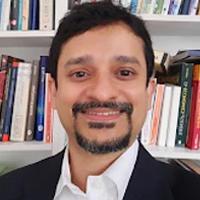Third EPF account ‘could do more harm than good’
Third EPF account ‘could do more harm than good’

PETALING JAYA: Two economists see danger ahead in the government’s plans for a “flexible” third EPF account to be implemented in April.
With members of the Employees Provident Fund projected to have low retirement savings in the future, economist Liew Chee Yoong says the savings rate might fall if a third account is introduced.

Liew, who is with the Center for Market Education and UCSI University, said “the savings rate might see a monthly deterioration of 2% to 5% if the money in the flexible account is withdrawn and used in non-productive ways by the contributors”.
Niaz Asadullah of Monash University Malaysia said if flexibility applied to existing contributions, independent of new contributions, “the added flexibility will do more harm than good”.
However, the third account would not harm a contributor’s savings and might even increase it, if implemented with additional contributions.
DISYORKAN UNTUK ANDA :
- Khairy Jamaluddin bodoh, cuba provokasi guna foto ‘super impose’
- Masih tiada keadilan buat Najib Razak
- “Pemimpin Perikatan Nasional kata syarat ketat” – Syed Abu Hussin
The provisions for flexibility could then potentially help EPF attract new members and broaden its customer base, he said.
He said self-employed individuals or those in irregular jobs with unstable but high earnings might benefit from flexibility.
“But many others with low income are vulnerable to temptations and overspending. For this group, commitment savings instead of flexible products are appropriate.”

The government’s intention of introducing a third EPF account was announced last week by deputy finance minister Ahmad Maslan. He said details would be announced later.
Prime Minister Anwar Ibrahim recently said that 6.3 million EPF members have less than RM10,000 in their EPF savings, which would provide them with a projected retirement income of less than RM42 per month over 20 years.
Liew said the figure was alarming. He proposed other social safety nets to reduce reliance on EPF savings alone for retirement.
“For example, if the government can afford it, it can pay a monthly universal basic income to the lower income group and also to those who really need it, such as the homeless, disabled and orphans, regardless of whether they are employed or not employed or retired.”
Niaz said if the current median savings of EPF members could be doubled, the government could recover the RM145 billion lost in retirement savings during the Covid-19 pandemic.
“But this requires additional measures beyond the flexible third account,” he said.
Liew suggested that the EPF expand its range of investment options, including higher-risk, higher-return options for those who could afford it.
This strategy aimed to potentially increase the investment returns for this group and, in turn, enhance their capacity to save, he said.
Niaz advocated for innovations in existing retirement saving schemes, such as i-Saraan and i-Suri.
He said women, especially those with lower wages and less control over their income, needed tailored strategies such as locked savings for housewives, and a mix of flexible and fixed accounts for working single mothers.
Third EPF account ‘could do more harm than good’
DISYORKAN UNTUK ANDA :
- Kemenangan Besar PRK Kemaman Bakal Lenyapkan Legasi Nik Aziz Dalam PAS
- Sudah Sampai Masanya Hamzah Serahkan Jawatan Ketua Pembangkang Kepada Dr Sam
- Warga Israel Merayu Supaya Kerajaan Israel Membawa Pulang Mayat Keluarga Mereka
LAWATI LAMAN FACEBOOK KAMI :




